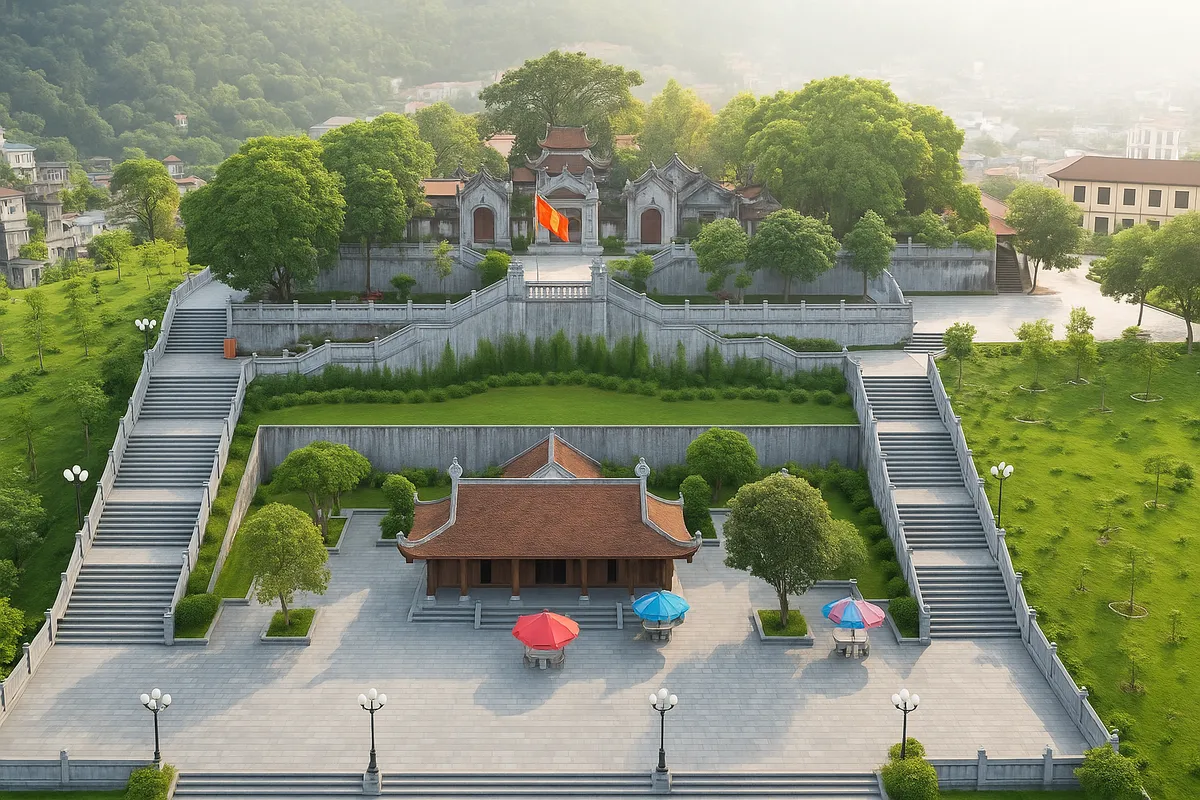Pu Hoat Nature Reserve and the green forest symphony
- Sunday, May 18, 2025, 20:24 (GMT+7)
Pu Hoat Nature Reserve and the green forest symphony
The Pu Hoat Nature Reserve, a name that echoes like a distant call from the ancient forest, gently stirs the imagination with a longing for a place not yet visited but already deeply felt. Here, nature is not just a backdrop but a living memory, where time seems to pause with the breath of the forest leaves, the gentle murmur of the streams, and the playful whisper of the wind among towering trees.
Tucked away in the western mountains of Nghe An province, within Que Phong district, Pu Hoat is a green treasure stretching over eighty thousand hectares of primeval forest. It winds through razor-sharp limestone ranges, twisting like slumbering dragons. The rugged terrain reveals wild beauty in every corner, with deep silent valleys, cascading white waterfalls tumbling from steep cliffs, and crystal-clear streams where the bottom feels within reach. The atmosphere recalls an unfinished Indochinese painting, untouched by the blur of modern life.
Pu Hoat is more than just nature. It is a place where every leaf and every forest slope holds a legend. The Thai people of Muong Dan believe the mountains here are the incarnations of forest deities who once stood guard over the village against floods and wild beasts. During festivals, the sound of traditional flutes rises from ancient wooden stilt houses, echoing through the valleys like a call to ancestral memories. Some houses are over three hundred years old, still fragrant with precious wood, as if time has fallen asleep in every grain, every moss-covered beam. These roofs, thatched with palm leaves and blanketed in green moss, are more than shelter. They are memory, identity, and a whisper from the past flowing through the present.
It is said that the Pu Hoat forest tells stories through scent. The scent of earth after the first summer rain, damp and tender. The scent of wind blowing from the vast forest, carrying moisture, wildflowers, and a hint of morning chill. The scent of freshly cooked bamboo rice by a flickering fire, blended with grilled fish and the spicy warmth of traditional wine. Every morning in Pu Hoat is a slow awakening in mist, where the sun rises like a golden yolk spilling over mountain peaks, glowing through a thin veil of silk-like fog, turning the landscape into something dreamlike and surreal.
Few people know that deep within Pu Hoat’s ancient forest, scientists discovered a brand-new species of deer, named the Pu Hoat muntjac. A small and rare creature, it carries the mysterious beauty of the land that nurtures it. Here, biologists also first recorded the appearance of the large Truong Son muntjac, further proving the rare richness and untouched nature of this local ecosystem. Some parts of the forest have never seen human footprints, where only hornbills cry across the cliffs and orchids bloom freely on aged trees.
Entering the ancient village of Muong Dan feels like stepping into another time. Elderly villagers with silver hair speak of days when there were no roads, only footpaths threading through the forest, where they carried rice, fire, and dreams through endless seasons of rain and sun. Children play by the stream, their eyes as bright as longan seeds, their voices chirping like wild birds. By the fire, mothers and grandmothers cook sticky rice while telling fairy tales of a forest fairy who turned into a waterfall, waiting for her lover who never returned from the hunt. These oral stories, though unwritten, pass from generation to generation like fire kept alive through time.
From March to May, and again from September to November, Pu Hoat reveals its gentlest self. The sunlight is golden and soft, the rain just enough to soften the earth and awaken the forest's fragrance. Those who visit during this time feel as if they have stepped into a parallel world where all senses come alive. The journey to Pu Hoat may be long, but it is a reward in itself. From Vinh City, travelers follow National Road 48, winding through endless curves, passing acacia forests and tea hills, reaching the remote borders of Que Phong. The deeper one goes, the weaker the phone signal becomes, but a strange peace grows, as if the forest has taken hold of one’s soul and offered it shelter.
The cuisine here is the flavor of the land itself. Every dish tells a story. Nghe An eel porridge, fragrant with fried shallots and fiery fresh chili, leaves a lasting impression. Banh muot, soft like silk, is hand rolled over glowing embers. Thanh Chuong pickled jackfruit is tangy and crisp, a reminder of long rainy seasons. Most notably, the bamboo rice of Ke Qua village, made with upland sticky rice cooked in bamboo tubes, served with sesame salt and grilled fish from the Giang River, often leaves visitors speechless with delight.
Wandering the forest, even a falling leaf can stir the heart. In Pu Hoat, everything seems to possess a soul. A moss-covered rock might be the legendary seat of heaven. A leaning tree over a stream could be a lovers’ bridge torn apart by ancient curses. These little details are not meant to be remembered. They are meant never to be forgotten.
In the growing trend of green travel and slow living, Pu Hoat does not need to try to be relevant. It is precisely in its simplicity, untouched by competition or glamor, that its charm lies. Everyone who comes wants to linger a little longer, gaze a little deeper, and listen a little more to the voice of the forest. One visitor once wrote in a journal, "Pu Hoat does not overwhelm, it silences." And in that silence lies something truly precious.
Pu Hoat is not a place to be fully discovered in one visit. Each return uncovers a new layer, a different memory, an unseen corner of the forest. It is not only a physical journey but also a spiritual one, where a person can speak to themselves amid nature’s grandeur. As one often quoted saying goes, "Nature does not heal, it simply waits for you to be quiet enough to listen." And perhaps in that quiet moment, someone will realize that Pu Hoat is not a destination, but a path to rediscover the self.

 CHECKIN.VN
CHECKIN.VN








Share on